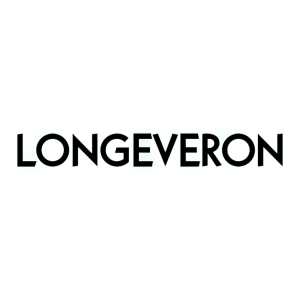Longeveron Announces Dr. Jorge Ruiz as Speaker for Roundtable Discussion & Presentation at 2021 International Conference for Frailty & Sarcopenia Research
Rhea-AI Summary
Longeveron Inc. (NASDAQ: LGVN) announced that Dr. Jorge Ruiz will present the results of the Phase 2b trial of Lomecel-B, focusing on its efficacy in treating aging frailty, at the ICFSR conference from September 29 to October 1, 2021. The study funded by the National Institute on Aging demonstrated a significant, dose-dependent improvement in walking distance among frail subjects after infusion, particularly in those receiving 200 million cells. Results indicated a 50-meter increase in walking distance at 180 days, suggesting the potential of Lomecel-B as a treatment for aging-related conditions.
Positive
- Significant improvement in walking distance for frail patients (average age 75.2) after Lomecel-B infusion.
- Statistically significant results observed: 50-meter increase at 180 days for the 200 million cells group (p=0.0065).
- Results showed a clear dose-response relationship at day 180 in the 6MWT endpoint.
Negative
- None.
News Market Reaction 1 Alert
On the day this news was published, LGVN declined 1.15%, reflecting a mild negative market reaction.
Data tracked by StockTitan Argus on the day of publication.
-- Jorge Ruiz, M.D., Associate Director for Clinical Affairs, Geriatric Research at the Miami VA Healthcare System, will present Longeveron’s Aging Frailty Phase 2b Trial Data
-- National Institute on Aging-funded study showed significant, dose-dependent improvement in walking distance after infusion with Lomecel-B in subjects with mild-to-moderate Aging Frailty
MIAMI, Sept. 21, 2021 (GLOBE NEWSWIRE) -- Longeveron Inc. (NASDAQ: LGVN) ("Longeveron" or "Company"), a clinical stage biotechnology company developing cellular therapies for chronic aging-related and life-threatening conditions, today announced that Jorge Ruiz, M.D., Associate Director for Clinical Affairs at the Geriatric Research, Education and Clinical Center (GRECC), Miami Veterans Affairs Healthcare System, and lead investigator in the trial, will present the results from the trial titled: A Phase 2b, Randomized, Blinded and Placebo-Controlled Trial to Evaluate the Safety and Efficacy of Lomecel-B Infusion in Patients With Aging Frailty (the “Phase 2b trial”) at the 2021 11th Annual International Conference for Frailty & Sarcopenia (ICFSR).
The trial and results, previously announced by the Company on August 13, 2021, will be presented via a pre-recorded webcast by Dr. Ruiz during a Roundtable on September 29, 2021, which will be followed by a live question and answer session from registered conference attendees. The webcast and recording of the Roundtable will be accessible on the “Events & Presentations” page on the Longeveron website at https://investors.longeveron.com/events-and-presentations/default.aspx after the conference, which runs from September 29 to October 1, 2021.
About the Phase 2b Trial
The Phase 2b trial, which was partially funded by a Small Business Innovation Research (SBIR) grant from the National Institute on Aging (NIA), evaluated the safety and efficacy of a single peripheral intravenous infusion of four different doses of Lomecel-B cell therapy (25 million (n=37), 50 million (n=31), 100 million (n=34) and 200 million (n=16) cells). The primary objective of the study was to assess the effect of Lomecel-B treatment on exercise tolerance and endurance via the six-minute walk test (6MWT).
- Results showed that frail subjects (average age of 75.2 years) with impaired mobility could walk nearly 50 meters further 180 days after a single infusion of Lomecel-B (200 million Lomecel-B group; p=0.0065). This increase persisted through 270 days (200 million Lomecel-B group change from baseline 47.9 meters; p=0.0115, and p=0.0077 compared to placebo). By comparison, the placebo-treated subjects change from baseline at 180 days and 270 days was 8.0 meters (p=0.5371) and -15.5 meters (p=0.2728), respectively. Additionally, results showed a clear, statistically significant dose-response curve at day 180 using the 6MWT endpoint.
About Aging Frailty
Aging Frailty is a life-threatening geriatric condition affecting approximately
The necessity for identifying patients with Aging Frailty is well-acknowledged in the geriatric community, and the treatment of Aging Frailty and promotion of healthful aging are recognized priorities of the National Academy of Medicine and NIA/NIH. Despite the pressing need for interventions, there are no FDA-approved therapies that can slow down, reverse, or prevent Aging Frailty.
About Lomecel-B
Lomecel-B is a proprietary allogeneic product comprised of medicinal signaling cells (MSCs) from the bone marrow of adult donors and culture-expanded in Longeveron’s current good manufacturing practice (cGMP) cell processing facility.
About Longeveron Inc.
Longeveron is a clinical stage biotechnology company developing cellular therapies for specific aging-related and life-threatening conditions. The Company’s lead investigational product is the LOMECEL-B™ cell-based therapy product (“Lomecel-B”), which is derived from culture-expanded medicinal signaling cells (MSCs) that are sourced from bone marrow of young, healthy adult donors. Longeveron believes that by using the same cells that promote tissue repair, organ maintenance, and immune system function, it can develop safe and effective therapies for some of the most difficult disorders associated with the aging process and other medical disorders. Longeveron is currently sponsoring Phase 1 and 2 clinical trials in the following indications: Aging Frailty, Alzheimer’s disease, the Metabolic Syndrome, Acute Respiratory Distress Syndrome (ARDS), and hypoplastic left heart syndrome (HLHS). The Company’s mission is to advance Lomecel-B and other cell-based product candidates into pivotal Phase 3 trials, with the goal of achieving regulatory approvals, subsequent commercialization, and broad use by the healthcare community. Additional information about the Company is available at https://www.longeveron.com/.
Forward-Looking and Other Statements
Certain statements in this press release that are not historical facts are forward-looking statements that reflect management's current expectations, assumptions, and estimates of future performance and economic conditions, and involve risks and uncertainties that could cause actual results to differ materially from those anticipated by the statements made herein. Forward-looking statements are generally identifiable by the use of forward-looking terminology such as "believe," "expects," "may," "looks to," "will," "should," "plan," "intend," "on condition," "target," "see," "potential," "estimates," "preliminary," or "anticipates" or the negative thereof or comparable terminology, or by discussion of strategy or goals or other future events, circumstances, or effects. Moreover, forward-looking statements in this release include, but are not limited to, statements about the ability of our clinical trials to demonstrate safety and efficacy of our product candidates, and other positive results; the timing and focus of our ongoing and future preclinical studies and clinical trials; the size of the market opportunity for our product candidates, the beneficial characteristics, safety, efficacy and therapeutic effects of our product candidates; our ability to obtain and maintain regulatory approval of our product candidates, our plans and ability to obtain or protect intellectual property rights, including extensions of existing patent terms where available and our ability to avoid infringing the intellectual property rights of others. Further information relating to factors that may impact the Company's results and forward-looking statements are disclosed in the Company's filings with the SEC. The forward-looking statements contained in this press release are made as of the date of this press release, and the Company disclaims any intention or obligation, other than imposed by law, to update or revise any forward-looking statements, whether as a result of new information, future events, or otherwise.
Investor Contact:
Brendan Payne
Stern Investor Relations
212-698-8695
brendan.payne@sternir.com







